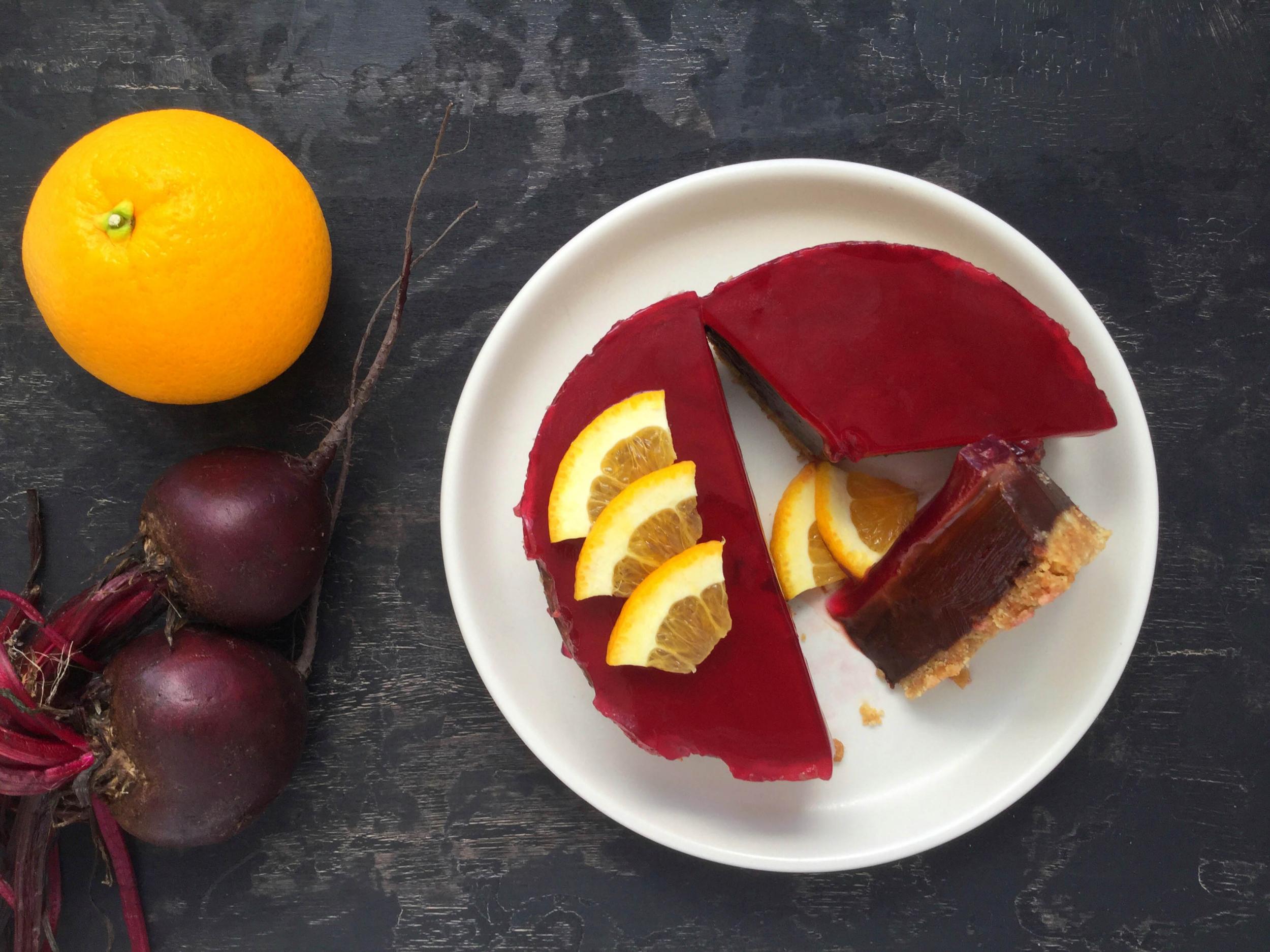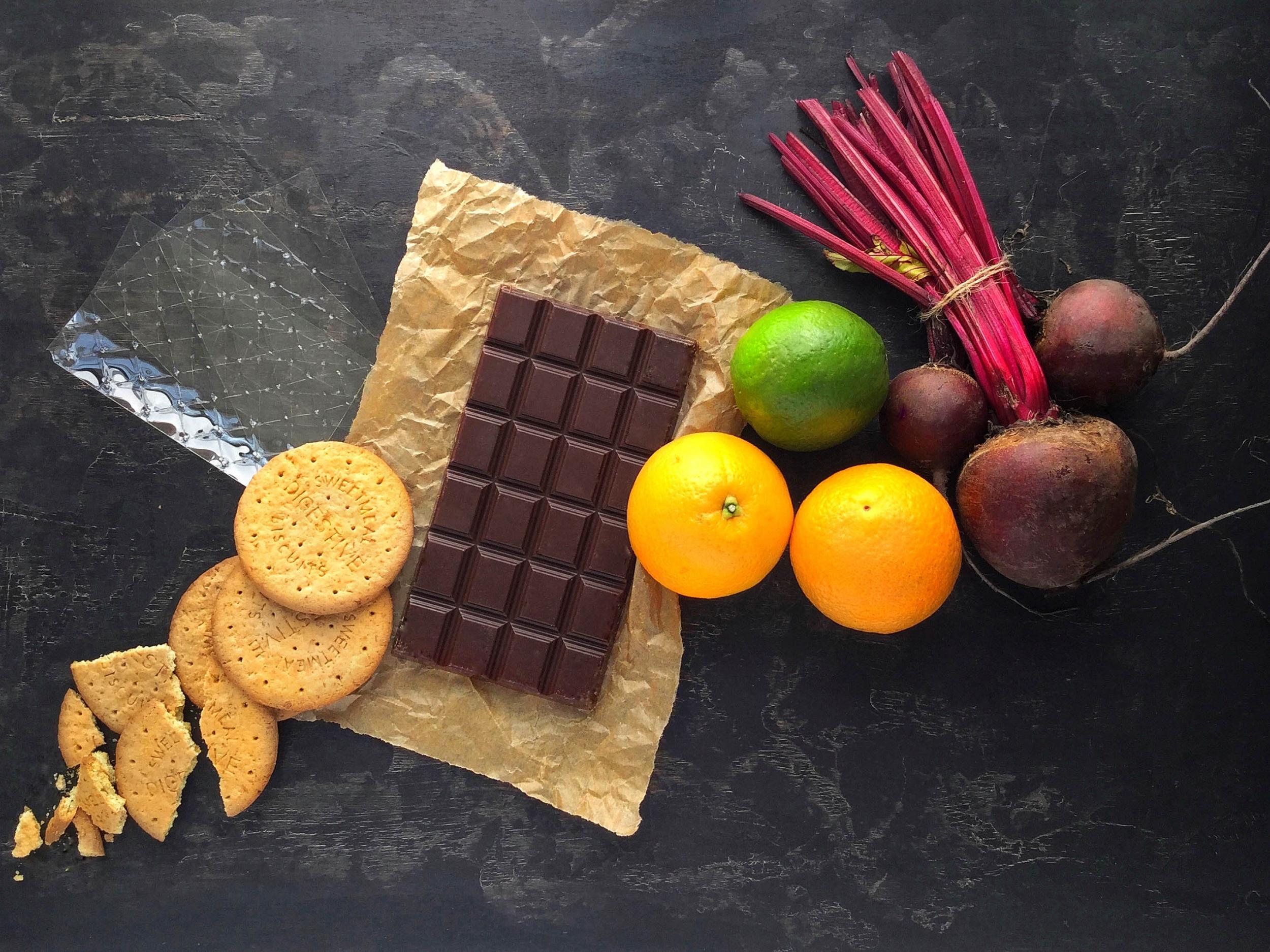How to make chocolate tart with beetroot and citrus glaze
With its unusual combination of earthy and sweet flavours, it can be used for savoury and sweet dishes. Just don't discard the leaves as they're full of nutrients, says Beverley Hicks

Your support helps us to tell the story
From reproductive rights to climate change to Big Tech, The Independent is on the ground when the story is developing. Whether it's investigating the financials of Elon Musk's pro-Trump PAC or producing our latest documentary, 'The A Word', which shines a light on the American women fighting for reproductive rights, we know how important it is to parse out the facts from the messaging.
At such a critical moment in US history, we need reporters on the ground. Your donation allows us to keep sending journalists to speak to both sides of the story.
The Independent is trusted by Americans across the entire political spectrum. And unlike many other quality news outlets, we choose not to lock Americans out of our reporting and analysis with paywalls. We believe quality journalism should be available to everyone, paid for by those who can afford it.
Your support makes all the difference.Belonging to the same family as chard and spinach, and packed with vitamins, minerals, antioxidants, fibre and potassium, beetroot is a nutritional heavyweight.
Both the leaves and root of the beetroot plant can be eaten and, maybe surprisingly, it is the leaves that pack the biggest nutritional punch being rich in iron, calcium, vitamin A and C.
The flavour of beetroot is earthy and sweet which makes it suitable for both savoury and sweet dishes.
This most versatile root can be juiced, pickled, blended into soups and eaten raw.
When roasted, the natural sweetness is intensified and the texture changes from crunchy to soft and silky.
You may think that a fudgy, rich chocolate ganache sitting on top of a buttery, crumbly biscuit base needs little or no additions and chocolate purists may be horrified at the through of pairing it with beetroot, but if it works – and it does – then I say: “Go for it!”
Pouring over this glossy deep red glaze ensures that every forkful has a perfect balance of impossibly rich chocolate, sweet and tangy citrus and a deep earthy undertone of beetroot.

Chocolate tart with beetroot and citrus glaze
Makes 1 large or 3 small tarts
For the digestive base
200g digestive biscuits, crushed
115g salted butter, melted
For the chocolate filling
340g dark chocolate, finely chopped
60g butter, chopped into small cubes
240ml double cream
For the beetroot and citrus glaze
145g beetroot (roughly 1 medium beetroot)
3 gelatine leaves
Juice of 2 large oranges
Juice 1 lime
50g caster sugar
To decorate
Orange slices
Preheat the oven to 180C. Wrap the beetroot in foil and roast for 40 minutes or until tender.
While the beetroot is roasting lightly grease a 25cm loose-bottomed cake tin (or 3 x 12cm loose-bottomed tins). Mix the biscuit crumbs and melted butter together and tip into the cake tin(s) and pack very tightly. Cover and refrigerate while you make the filling.
To make the filling, put the chocolate and butter into a heatproof bowl. Heat the cream in a small saucepan on a medium heat until it just starts to bubble – don’t let it boil. Turn off the heat and pour the cream over the chocolate and butter. Cover and leave to stand for a few minutes then stir until melted and smooth. Leave the chocolate filling to cool for 5 minutes, stirring occasionally.
Remove biscuit crust(s) from the fridge, pour the chocolate mixture onto the crust(s), smooth with the back of a spoon and give the tin a few taps on the counter to remove any surface bubbles. Cover again and refrigerate for a couple of hours, or until set.
To make the beetroot and citrus glaze, put the gelatine sheets into a bowl of cold water and leave to soak. Peel and roughly chop the cooled beetroot and process with the orange and lime juices in a blender until smooth. Strain the mixture through a fine mesh sieve set over a bowl, pressing to extract as much liquid as possible. Discard any remaining solids in the sieve.
You should be left with approximately 250ml of mixture, if short, top up with a little water. Pour into a small saucepan, add the sugar and heat on a medium heat for 1-2 minutes or until the sugar dissolves. Bring to the boil then simmer for 2-3 minutes until slightly thickened. Remove from the heat and leave to one side to cool.
When the glaze has cooled, but not yet set, remove the tarts from the fridge and pour a thin layer of the glaze over the top of the filling. Cover and return to the fridge to set the glaze.
Remove from the fridge about an hour before serving, for ease of slicing. Use a sharp knife to loosen the chilled tart from the rim of the loose-bottomed pan, then remove the rim. Slide the tart off of the base and place on a serving dish. Just before serving, decorate with fresh orange slices.
Follow Beverley Hicks @thelittlechelseakitchen
Join our commenting forum
Join thought-provoking conversations, follow other Independent readers and see their replies
Comments